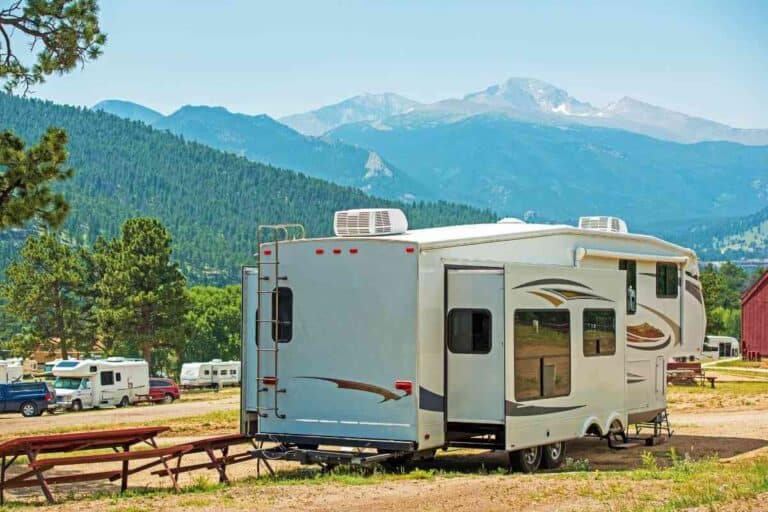Is Mulberry Wood Good For Firewood? Pros & Cons
The mulberry tree is a fast-growing temperate tree. But is it a good source of firewood?

Are mulberry trees good for firewood?
Yes, mulberry wood is a good source of firewood. It has a high heat output, has a sweet smell, and is easy to split. In addition to that, it is not difficult to get adequate stockpiles for this wood. Because this wood has a low sap level, it will not lead to a dirty chimney.
As the name suggests, the mulberry tree has a reputation for producing dark purple berries. This tree is also easy to identify with its alternate leaves, a red center, a white or light-brown outer ring, and its ability to grow to a height of 50 feet tall.
Furthermore, this tree has won the hearts of most people when it comes to firewood selection. When contrasted with other types of firewood, mulberry ranks high in terms of heat output.
So, if you’ve been wondering whether mulberry wood is good for firewood, you’ve come to the right place. Here, we shall look at the unique characteristics of mulberry wood and how it performs when set aside with other available firewood types.
We hope that this article will answer most of your questions, and that you will be able to make an informed decision about your firewood needs.
Can Mulberry Be Used as Firewood?
There are several factors that you should consider when choosing the firewood to use. These include the following:
- Your available budget for heating
- The need to preserve the environment
- The storing space at your disposal
- Your location and the local weather
- The amount of time you have to monitor the heating process
- The desired content of moisture
- The desired ease of kindling
So, is mulberry wood a reliable source of firewood? Yes, the mulberry tree is a reliable source of firewood, and American users have confirmed this as much.
I used this wood through last winter, and it served my purpose. I intend to be using it year after year, and I would recommend it to others.
Mulberry is an excellent option for anyone that wants high heat production and low sap content. Emitting 25.8 million BTUs per cord, this firewood falls in the list of top heat-producing woods alongside maple, oak, beech, and apple.
For this reason, you can never go wrong with this firewood if you want to heat your firepit.
It is also suitable for providing warmth during cold winter nights. In addition to the heat output, something else that most people consider is coal production. The quality of coals produced when burning firewood will determine how long the fire will stay.

Unlike woods with a low BTU rating, mulberry produces quality coals that will enable your fire to continue burning through the night.
You won’t have a hard time restarting the fire in your wood stove the next morning.
Worried about creosote build-up in your tiny home? Well, the last thing you want is the buildup of black tar in your chimney since this can cause health issues. Luckily, for mulberry, regular chimney maintenance won’t be much of a problem owing to the low sap levels.
Sappy firewood-like pine produces creosote build-up, making it hard to maintain your stove.
Mulberry wood is not only easy to split but also has a sweet smell that is not too overwhelming. The sweet smell is a consequence of the high sugar content.
For some people, the refreshing and sweet aroma produced from burning mulberry firewood serves as an organic room freshener. Although mulberry is reputed for producing smoke, the smoke is safe and non-toxic.
You just need to ensure proper ventilation or install a glass screen to lower the side effects of smoke production. It is also worth noting that mulberry produces sparks, making it a safer option for an outdoor fire pit or enclosed stove.
How Long Does Mulberry Take to Season?
Different woods take varying periods to season and dry out for the best results when burning. With mulberry, you can expect it to take about 1 year or more to get completely seasoned.
Of course, this depends on factors such as location, weather, and type of storage. How you split your mulberry firewood is another factor that determines how long it will take to season it. To expedite the seasoning process, split the wood into smaller pieces to increase the surface area exposed to sunshine.
In addition to this, stack the firewood in the direction with the most breeze and away from shade. This allows an adequate amount of airflow and increases sunshine exposure.
Don’t forget to cover your pile of firewood especially if you store it outside. This helps to protect it against moisture, rain, and snow, which can prolong the seasoning process.
What is a Mulberry Tree Good For?
On top of producing delicious fruits, a mulberry tree is worth considering for firewood. Its high heat output places it among the most incredible firewood in the country.
It burns hot to keep you warm during chilly nights and produces a stable temperature for heating food.
Still, mulberry burns long enough to ensure that you enjoy a cozy atmosphere. The best part is that there are multiple mulberry firewood varieties to choose from depending on your location, budget, as well as your specific needs and preferences.
From red mulberry, and white mulberry, to black mulberry, you can easily choose the best mulberry firewood to keep you company as you enjoy the night away.
The smoke production is average, the smell is aromatic, and the creosote build-up is minimal. It also seasons quickly and is pretty easy to split. Since the trunk has a thin diameter, you just need to ensure that you have an adequate stockpile to burn all night.
Is Mulberry Wood Toxic?
In most cases, mulberry wood is less toxic, particularly when compared with other hardwood options. About toxicity, what comes to the mind of most people is creosote build-up.
This occurs when huge amounts of black tar build up in the chimney, usually when burning unseasoned wood. Creosote build-up can increase the risk of fire in most homes, including log cabins, and cause various health issues. Fortunately, mulberry has relatively low sap levels, meaning that it doesn’t cause high amounts of creosote buildup, and therefore, you will not incur the heavy cost that comes with cleaning the chimney.
Something else to be concerned about using firewood mulberry for firewood is the generation of smoke.
While mulberry produces more smoke compared to woods like oak and ash, its smoke output is much lower than other types like pine and hard maple. But even with smoking, you won’t have to worry much about your safety or that of your family.
Basically, the smoke can cause mild side effects for those with high sensitivity. The easiest way to lower the smoke output is by properly seasoning your mulberry tree before using it as firewood. Otherwise, wet wood can burn dirty as it produces more smoke.
Key Takeaways
- Mulberry is hands down one of the top-tier firewood options because of its high heat production, high-quality coals, and burns slowly.
- Mulberry firewood is perfect for burning outdoors or adding warmth to your home in a wood stove. It also generates a stable temperature for cooking.
- The trunk has a thin diameter and the yield per tree can also be low. Fortunately, you can find a good stockpile of mulberry logs to last you for a night.
- Proper seasoning of a mulberry tree helps to reduce the smoke output.
- Mulberry firewood produces sparks and is best left for outdoor fireplaces.



![Are Treehouses Dangerous? [How To Avoid Injuries!]](https://freedomresidence.com/wp-content/uploads/2022/05/Are-Tree-Houses-Dangerous-768x512.jpg)


